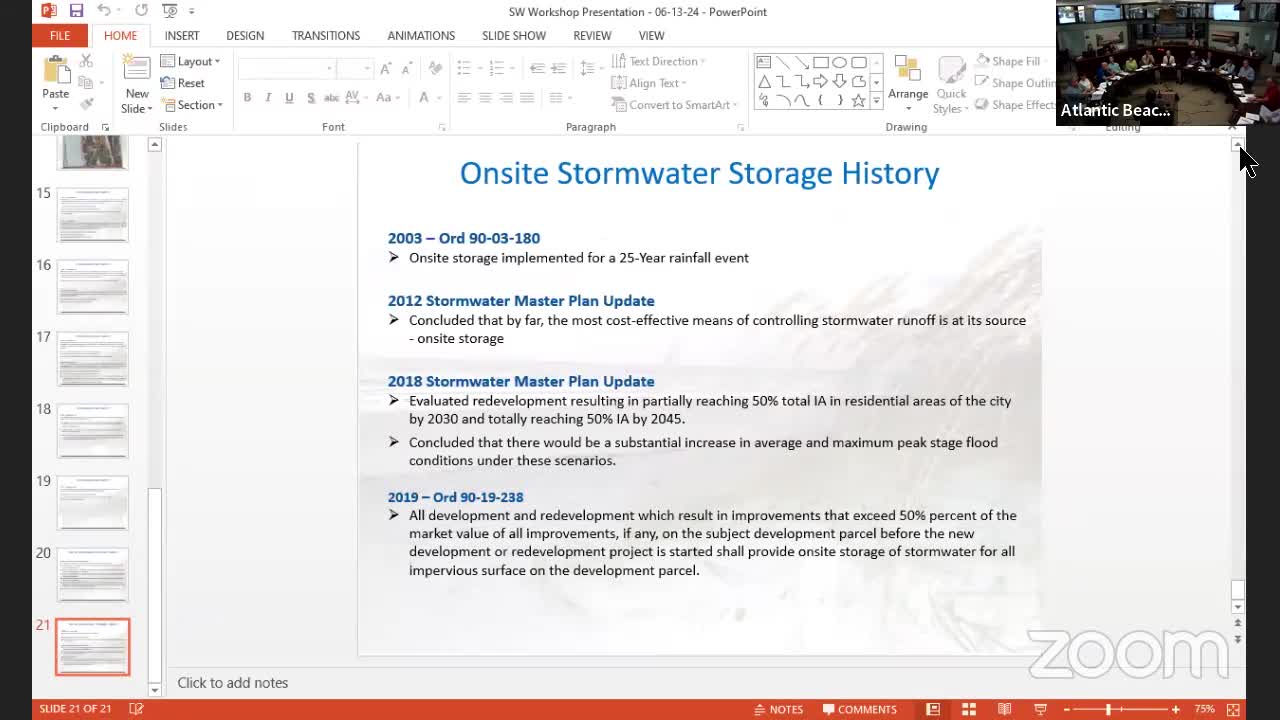City plans major stormwater improvements to combat flooding
June 17, 2024 | City of Atlantic Beach, Duval County, Florida

This article was created by AI summarizing key points discussed. AI makes mistakes, so for full details and context, please refer to the video of the full meeting. Please report any errors so we can fix them. Report an error »

In a recent government meeting, officials reviewed the progress and challenges of stormwater management initiatives since 2018, focusing on the impervious area and onsite storage reviews. The discussion highlighted the evolution of the stormwater master plan, which initially aimed to update the stormwater model and develop a ten-year improvement strategy. However, the inclusion of impervious area analysis and onsite storage came later, driven by city discussions on flooding concerns.
The meeting emphasized the importance of utilizing advanced data, such as LiDAR technology, to enhance the accuracy of flood modeling. This upgrade allows for a more detailed understanding of water flow and storage, which is crucial for planning effective stormwater improvements. A key project discussed was the Aquatic Gardens project, which has garnered interest from multiple funding agencies due to its potential to mitigate flooding.
Officials presented findings from an impervious area impact analysis, which examined the effects of increased impervious surfaces on runoff and flooding. The analysis modeled various scenarios, revealing that higher impervious areas correlate with increased runoff and more frequent flooding events. This data underscores the challenges faced by the city as it balances redevelopment with the need to manage stormwater effectively.
The meeting concluded with a call for more projects to address existing flooding issues, while acknowledging that increasing impervious surfaces would exacerbate runoff problems. City officials reiterated the need for a strategic approach to stormwater management, emphasizing that while redevelopment is necessary, it must be accompanied by adequate infrastructure improvements to prevent further flooding challenges.
The meeting emphasized the importance of utilizing advanced data, such as LiDAR technology, to enhance the accuracy of flood modeling. This upgrade allows for a more detailed understanding of water flow and storage, which is crucial for planning effective stormwater improvements. A key project discussed was the Aquatic Gardens project, which has garnered interest from multiple funding agencies due to its potential to mitigate flooding.
Officials presented findings from an impervious area impact analysis, which examined the effects of increased impervious surfaces on runoff and flooding. The analysis modeled various scenarios, revealing that higher impervious areas correlate with increased runoff and more frequent flooding events. This data underscores the challenges faced by the city as it balances redevelopment with the need to manage stormwater effectively.
The meeting concluded with a call for more projects to address existing flooding issues, while acknowledging that increasing impervious surfaces would exacerbate runoff problems. City officials reiterated the need for a strategic approach to stormwater management, emphasizing that while redevelopment is necessary, it must be accompanied by adequate infrastructure improvements to prevent further flooding challenges.
View full meeting
This article is based on a recent meeting—watch the full video and explore the complete transcript for deeper insights into the discussion.
View full meeting